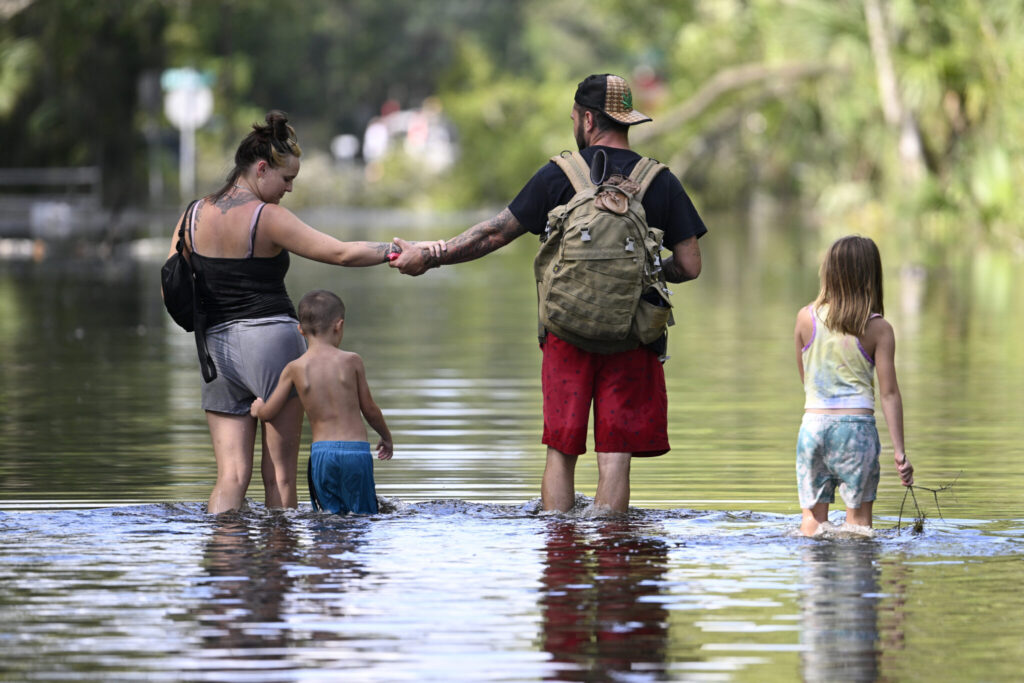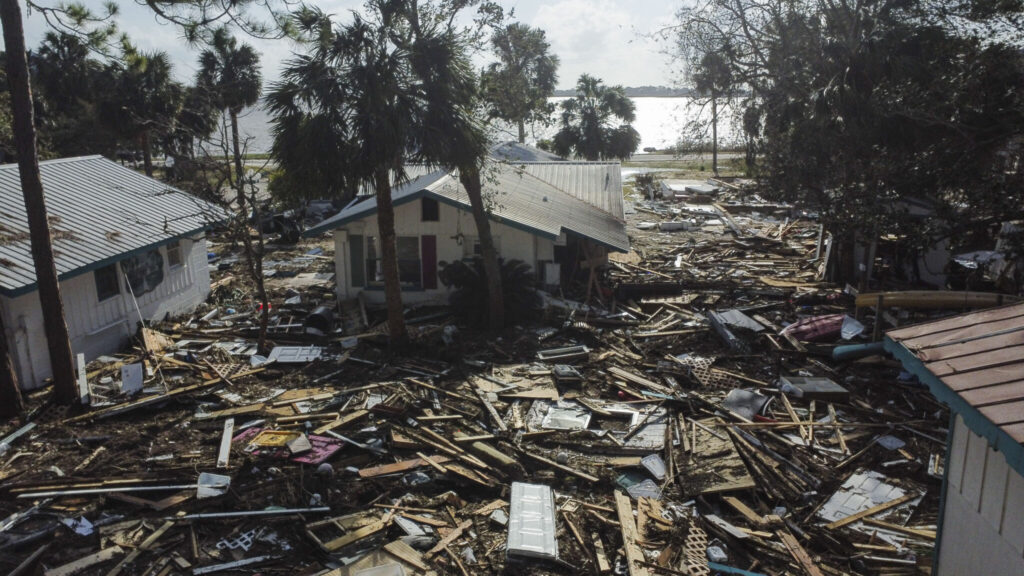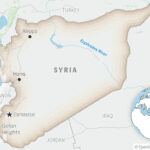Helene power outages/ hurricane damage Southeast/ Helene fatalities/ Newslooks/ PERRY/ Florida/ Hurricane Helene has left dozens dead and millions without power as it tore through the southeastern United States. The Category 4 storm caused widespread damage, floods, and evacuations, with entire communities cut off due to landslides and rising waters. Recovery efforts are ongoing amid fears of further flooding and power outages.

Hurricane Helene’s Aftermath: Quick Looks
- Category 4 Destruction: Helene struck Florida with 140 mph winds, causing widespread damage across the Southeast.
- Death Toll: At least 44 people have been confirmed dead, with fatalities in multiple states.
- Millions Without Power: Over 3 million people are facing power outages due to infrastructure damage.
- Flooding and Landslides: Record rainfall and landslides have isolated communities in North Carolina and Tennessee.
- Evacuations and Rescues: Thousands have been evacuated, and hundreds of water rescues have been conducted.
- Property Damage: Estimated property losses range between $15 billion and $26 billion.
Hurricane Helene Kills Dozens, Leaves Millions Without Power
Deep Look:
Hurricane Helene carved a deadly path across the southeastern United States, leaving behind a trail of destruction, dozens of deaths, and millions without power. The storm made landfall in Florida’s Big Bend region as a powerful Category 4 hurricane late Thursday, with wind speeds reaching 140 mph (225 kph). As it continued its march through Georgia, the Carolinas, and Tennessee, Helene uprooted trees, demolished homes, and triggered severe flooding, leaving communities reeling in its wake.
Western North Carolina was particularly hard hit by landslides and flooding, which forced the closure of Interstate 40 and other vital roads, cutting off large portions of the region. Hundreds of water rescues were carried out, with some of the most dramatic occurring in Unicoi County, Tennessee. In a perilous operation, dozens of patients and hospital staff had to be airlifted to safety as floodwaters engulfed the building. The National Hurricane Center, now classifying Helene as a post-tropical cyclone, warned that the storm would hover over the Tennessee Valley through the weekend, threatening more flash floods and high winds.
At least 44 people lost their lives in the storm, including three firefighters, a woman and her newborn twins, and an 89-year-old woman crushed by a falling tree. The fatalities spanned across Florida, Georgia, North Carolina, South Carolina, and Virginia. The grim toll is likely to rise as authorities continue to survey the damage and conduct door-to-door searches in hard-hit areas. For Kera O’Neil of Hudson, Florida, the danger became all too real when water levels inside her home reached her knees. She and her sister made a harrowing escape through chest-high water, carrying their two cats in makeshift carriers.
Evacuations and Record Rainfall
The storm’s effects extended well beyond the initial landfall, with record rainfall recorded in some areas. Atlanta experienced over 11 inches of rain in just 48 hours, breaking a record that had stood since 1878. Many neighborhoods were submerged, with only the roofs of cars visible above the floodwaters. In North Carolina, a dam at a lake featured in the film Dirty Dancing was overtopped, forcing the evacuation of nearby residents. Although the dam held, fears of additional failures prompted more evacuations in towns like Newport, Tennessee, where concerns over another dam triggered mass exits.
Helene also spawned multiple tornadoes, with one in Nash County, North Carolina, leaving four people critically injured. Throughout the storm’s path, nearly 3.5 million people were left without power, many of whom will face prolonged outages due to catastrophic damage to the electrical grid.
Moody’s Analytics estimates the storm caused between $15 billion and $26 billion in property damage, as powerful winds and flooding ravaged homes, businesses, and critical infrastructure. The intense storm is a reminder of the growing threat posed by hurricanes, which experts say are becoming stronger and more frequent due to climate change. Warming ocean waters contribute to rapid intensification, turning what would have been smaller storms into devastating cyclones in a matter of hours.
Big Bend Region Devastation
Florida’s Big Bend region, a largely undeveloped area of salt marshes and pine flatwoods, bore the brunt of Helene’s fury. Unlike other parts of Florida’s coastline, which are dotted with condo developments and strip malls, Big Bend is more rural and less populated, making the destruction even more profound for those who call the area home. Susan Sauls Hartway, a resident of Taylor County, was among those hardest hit. As she walked near Ezell Beach in search of her missing house, she reflected on the community’s vulnerability. Her home, along with many others, was swept away by the storm, leaving her and her Chihuahua, Lucy, homeless.
“This was all they had,” Hartway said, noting that many residents have nowhere else to go. The area has been hit by three hurricanes since August 2023, and locals fear that recovery will be slow and difficult, particularly as wealthier out-of-state residents who own second homes may choose to leave permanently.
Power Loss and Infrastructure Damage
In Florida, particularly in Pinellas County, where five residents perished in neighborhoods under mandatory evacuation orders, the storm caused unprecedented damage. Some who chose to remain had to seek refuge in their attics to escape the rising floodwaters. Pinellas County Sheriff Bob Gualtieri warned that the death toll could rise as rescue teams continue their search operations.
Helene’s impact was not confined to Florida. Georgia and the Carolinas also suffered extensive damage, including widespread power outages and toppled trees. Three firefighters, two in South Carolina and one in Georgia, lost their lives when trees fell on their vehicles during the storm. In Virginia, Governor Glenn Youngkin confirmed the death of at least one person.
Recovery Efforts and Ongoing Threats
President Joe Biden pledged federal support to assist with recovery efforts, and the Federal Emergency Management Agency (FEMA) dispatched more than 1,500 workers to the affected areas. By Friday morning, they had already helped with over 400 rescues. Officials urged those still trapped in flooded homes to stay put and avoid wading through dangerous floodwaters, which may contain live wires, sewage, and sharp debris.
In Georgia, utility companies warned of catastrophic damage to their infrastructure, with over 100 high-voltage transmission lines knocked down. In South Carolina, more than 40% of residents were without power, and debris-covered roads made it difficult for repair crews to assess the damage.
The storm’s arrival was eerily reminiscent of Hurricane Idalia, which made landfall in a similar location the previous year. Florida Governor Ron DeSantis remarked that the damage from Helene may surpass the combined destruction caused by Idalia and Hurricane Debby in August. The full extent of the storm’s destruction is still being evaluated, but it is clear that recovery will take weeks, if not months.
Historic Flooding Expected
As the remnants of Helene linger over the region, forecasters are warning of even more flooding. In the Appalachian Mountains, mudslides have washed out sections of highways, including parts of Interstate 40 at the North Carolina-Tennessee border. One mudslide trapped residents in their homes for over four hours before emergency responders could reach them.
The National Weather Service has predicted that some areas of North Carolina may experience flooding more severe than anything recorded in the past century. The Connecticut Army National Guard has been called in to assist with helicopter rescues, as authorities prepare for the possibility of additional evacuations.
Hurricane Helene is the eighth named storm of the Atlantic hurricane season, which began in June. With ocean temperatures at record highs, the National Oceanic and Atmospheric Administration (NOAA) had predicted an above-average season, and Helene’s destructive power serves as a grim testament to the increasing threat of extreme weather events.







